Search form
- A1-A2 grammar

Countable and uncountable nouns
It’s the day of Oliver and Alfie’s cooking competition. Daisy is filming the chefs in action, and Mum is on her way home.
Instructions
As you watch the video, look at the examples of countable and uncountable nouns. They are in red in the subtitles. Then read the conversation below to learn more. Finally, do the grammar exercises to check you understand, and can use, countable and uncountable nouns correctly.
Daisy: So, our first chef is Alfie. Alfie, let’s see your ingredients. Alfie: OK, well, I’ve got a lemon, an apple and some garlic, some butter and some chicken breasts ... livers! Ah, chicken livers! Daisy: Mmm ... chicken livers ... an unusual choice. Are you feeling confident? Alfie: Well, sort of. It’s a challenge! Daisy: OK ... now to Oliver. Hi, Oliver. Oliver: Hello. Daisy: What ingredients have you got, Oliver? Oliver: OK, well I’ve got a steak, some red chilli peppers, some potatoes, cream, onions and some giant prawns. Daisy: Wow – an interesting selection. How do you feel about the competition? Oliver: I’m pretty confident. I mean ... steak and prawns, or chicken livers ... I know which I prefer! Daisy: OK, well, we’ll be back later.
Mum: Hi, love. Daisy: Hi, Mum. Where are you? Mum: At the airport. What’s going on there? Daisy: Well, right now Alfie and Ollie are having their Master Chef cooking competition. Daisy: Only 53 minutes left! Mum: OK, love, see you soon. Daisy: Bye, Mum – if you’re lucky, you’ll arrive home in time to taste the dishes! Mum: Hmm ... shall I bring some fish and chips just in case?
Daisy: Let’s taste the pâté first, Mum. Mum: OK, it smells and looks delicious! Oliver: OK, OK. Try it first, judges. It’s all in the taste. Daisy and Mum: Oooooh, that’s amazing! Mum: Mmmm! I could eat it all! Alfie: Wow, thanks Sophie! Oliver: OK, leave some space for my dish! Daisy: Mmmm ... it’s tasty ... whoa! How many chili peppers? Mum: Wow, it’s good, Oliver! It’s a taste of Thailand! It’s going to be a difficult decision. Mum and Daisy: This year’s Master Chef champion is ...
Some nouns in English are countable – we can use them in singular and plural forms. Some are uncountable – they only have one form.
We often use a/an with singular countable nouns and some with plurals. We can also use some with uncountable nouns.
What are examples of countable nouns?
Here are a few:
I've got a steak, some red chilli peppers, some potatoes… OK, well, I've got a lemon, an apple … and some chicken breasts. I'd like a blue pen, please.
OK, so for things you can count, like one pen, two pens … Why did you say a pen , not one pen ?
We often use a/an before singular countable nouns. Before words that start with a vowel sound, we use an , and before words that start with a consonant sound, we use a .
So is one wrong? As in Would you like one drink?
It sounds as if you're saying one (not two). If you're offering someone a drink, you'd say Would you like a drink?
But someone who works in a café might say, So that's one coffee and two lemonades.
So it's usually a or an for singular countable nouns and a number or some for plurals. How many is some ?
It can be any number more than one.
I got some new jeans at the weekend. (a pair of new jeans) Some teachers left at the end of the year. (we don't know how many)
Is some or a number always used with plurals?
No, have a look at these examples
I'm frightened of dogs . (dogs in general) Strawberries have a lot of vitamin C. (strawberries in general)
What about uncountable nouns?
These are nouns that don't have a plural form.
I've got some garlic and some butter . I'm looking for i nformation about early rock and roll. I haven't got enough paper . You have to get permission from the head teacher. Do you want some cake ?
So, I can use some with uncountables too?
Yes, we use some with both countables and uncountables.
How do I know whether a noun is countable or uncountable?
A dictionary will tell you. Usually dictionaries use symbols [C] for countable and [U] for uncountable.
Just a minute. You said cake was uncountable. What about I made a cake this morning ?
Yes that's correct, but there's a difference in meaning.
I made a cake this morning. (a whole cake – countable) Do you want some cake ? (a piece of cake – uncountable) A box of chocolates . (individual chocolates – countable) I'd like some chocolate too. ( a piece or pieces of chocolate from a bar of chocolate – uncountable)
I thought coffee and lemonade were uncountable too.
Yes, they are usually.
I love coffee with hot milk. (uncountable) Can you get some coffee ? (uncountable) I'll have a coffee , please. (a cup of coffee, countable)
Wow, so it's more complicated than I thought.
No, they're not really very difficult.
OK, they're easy. It's a piece of cake !
Yes, simple! A piece of cake !
Check your grammar: picture matching - countable and uncountable nouns
Check your grammar: gap fill - countable and uncountable nouns, check your grammar: multiple choice - countable and uncountable nouns, worksheets and downloads.
The expression a piece of cake means something is really easy. Is speaking English a piece of cake for you?

Sign up to our newsletter for LearnEnglish Teens
We will process your data to send you our newsletter and updates based on your consent. You can unsubscribe at any time by clicking the "unsubscribe" link at the bottom of every email. Read our privacy policy for more information.
About Words – Cambridge Dictionary blog
Commenting on developments in the English language
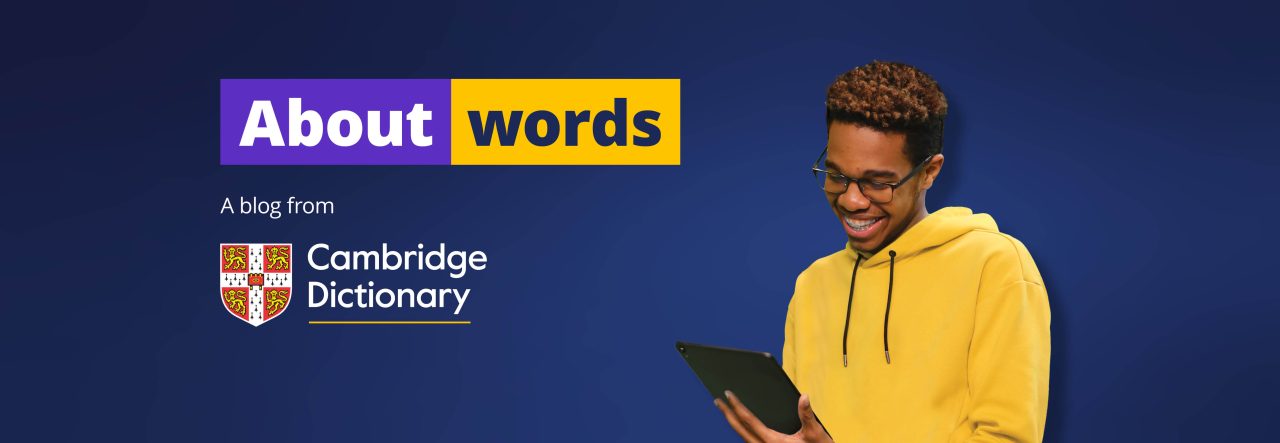
Countable or uncountable, and why it matters

by Liz Walter
Many dictionaries for learners of English (including the one on this site) show whether nouns are ‘countable’ or ‘uncountable’, often using the abbreviations C and U. Countable nouns are things that you can count – one dog, two dogs, twenty dogs , etc. Uncountable nouns are things that you cannot count – water, sadness, plastic , etc.
It is important to know whether a noun is countable or uncountable, otherwise you are likely to make basic grammar mistakes. For example, countable nouns can have indefinite articles and can form plurals, but uncountable nouns cannot:
You should bring a coat. (‘coat’ is a countable noun)
I have three winter coats.
The teacher gave us a homework. (‘homework’ is an uncountable noun)
We have lots of homeworks.
If you have countable and uncountable nouns in your own language, you need to be very careful because they may not be the same ones. If I had £1 for every time one of my students has said or written ‘an advice’ or ‘some informations’, I would be very rich by now! In English, advice and information are both uncountable nouns, so they cannot have ‘an’ in front of them and they cannot be made plural.
Other common uncountable words that often cause problems are: equipment , furniture , transport , knowledge , countryside , traffic , research , progress , evidence , machinery.
You also need to know whether a noun is countable or uncountable in order to decide whether to say much or many . ‘Many’ is used with plural countable nouns and ‘much’ with uncountable nouns:
How many brothers and sisters do you have?
How much brothers and sisters do you have?
How much money do you have?
Some and any are used with plural countable nouns and uncountable nouns, but not with singular countable nouns:
We don’t have any eggs/sugar.
Would you like some mushrooms/cheese?
Do you have any coat?
Sometimes we may want to make an uncountable noun more like a singular countable one. We do this by using a quantity expression before it:
She gave us an advice/information.
She gave us a piece of advice/information.
We bought a few furnitures/clothings.
We bought a few items of furniture/clothing.
Finally, some uncountable nouns end in ‘s’. They include activities such as aerobics, athletics, gymnastics and darts ; academic subjects such as economics, linguistics, politics and physics and illnesses such as measles, mumps, rabies and diabetes . These nouns look like countable plurals, but they are uncountable and therefore need a singular verb:
Linguistics is a very interesting subject.
Aerobics makes you fit.
You will probably notice that some words in the dictionary are labelled both C and U. In my next post, I’ll look at some of these words and explain how nouns can be both countable and uncountable.
Share this:
- Click to share on Facebook (Opens in new window)
- Click to share on Twitter (Opens in new window)
- Click to share on Reddit (Opens in new window)
- Click to email a link to a friend (Opens in new window)
- Click to print (Opens in new window)
- Click to share on LinkedIn (Opens in new window)
- Click to share on Pinterest (Opens in new window)
48 thoughts on “ Countable or uncountable, and why it matters ”
It’s helpful…
Extremely helpful.
A little bit of a headache
Is it? Then you’ll HATE advanced English.
Thanks a lot, Liz, for this excellent explanation. It is clear and concise!
Need to talk to you about the use of an apostrophe though.
One uncountable noun ending in ‘s’ that could be added to the list is news. It is difficult for French students to use a singular verb -what is the news? the news is good- since les nouvelles is a plural and need a plural verb!
Yes, that’s a very good addition.
I loved the article but would have liked to see my personal pet peeve. The countable error I see everywhere I go is the “ten items or less” signs which should be “10 items or fewer”. I did know a checkout clerk who put up their own, corrected sign at their place of employment.
Joshua, see my post on just this subject: https://dictionaryblog.cambridge.org/2014/05/28/less-or-fewer/
I guess maybe you can say: “This piece of news is good” to avoid confusion but I saw it is not very usual. This kind of confusion can happen also in my language, Italian.
Yes, we’d be more likely to say: ‘That’s good news’, but we could say for example ‘I have a piece of news I think you’ll like’.
Hi Liz , Thank you very much for posting this informative article about countable and uncountable nouns.To be honest, I always had a confusion of not having indefinite article before a noun ( I did not know until now that it was because they were uncountable nouns☺). So , keep your good work up of enlightening guys like us about the unseen patterns of grammar in Language of English.
Confusion is also uncountable…. NOT a confusion.
very best issues in my life I need such guidance …
Really now I got why it’s not informatiions…same is the with findings, repercussions etc
Thank you for this article It is very effective to understand a challenging topic I always struggle with!!
About the puzzle of “any” (Some and any are used with plural countable nouns and uncountable nouns, but not with singular countable nouns), which one should be more suitable, 1. Is there any question to ask the speaker? 2. Are there any questions to ask the speaker? Thanks a lot.
The second one is correct. The first one is not correct.
Hello, Liz. I’ve been following some of your posts and they’re all extremely helpful. Thank you for the good work made available through the blog. I’ve seen a few times in American series, though not much frequently, people saying “a water”… For example: A: I went to get her water and she ran away. B: Did you let her all by herself here and went to get her a water? (I imagine a water equals a glass of water, in the context of the scene)
Do people in England also say such a thing?
Thanks in advance,
It sounds quite unlikely to me. In theory, it’s possible in the context of being in a pub or cafe, but it would be much more common to say ‘some water’ or ‘a bottle/glass of water’.
Hi Liz, thanks a lot for the reply.
Yeah, it does seem unlikely to me too, especially for being a non-native speaker and having always been pointed out to by teachers that it’s completely wrong to say such a thing. I guess that’s quite Ame. If you ever want to check it out, it happened in the series Suits, season 01 – episode 06, at the moment 05:36. The precise words were “You left her alone to get her a water?”.
Hello, Liz. Thank you for your articles. Could you explain why did you omit ‘a’ before ‘cafe’ in your previous answer: ‘…it’s possible in the context of being in a pub or cafe…’? Thanks.
Denis – because if you link two countable nouns with ‘and’ or ‘or’, you only need to put an article in front of the first one, although it is not wrong to put them twice.
Yes thank you 😎
Thanks, Liz. It’s a great article on grammar.
It is emerging issue ,thanks for making blog.
Thanks,but how correct is it to use ‘much’ on a countable noun like MONEY instead of ‘many’?.Example;how much do have with you Liz,one US dollar says Liz.Anticipating ur response via my email
We say ‘how much’ as a short form of ‘how much money and money is uncountable: that’s why it’s ‘much’. Dollar is countable, so you’d have to say ‘How many dollars do you have?’ although that’s a very unlikely sentence.
But we can count money
We have to think about the word, not the item. We can’t say one money, two money.
I have a rather odd question. ‘Money’ is listed in the dictionary as an uncountable noun. However its older plural form ‘monies’ has been listed as a plural noun as well. Now as both a life long speaker and a teacher I’ve never used it though I have occasionally come across its use in spoken (I always dismissed it as a spoken error) and a student’s question has left me confused.
Very useful to Asian .Thank you!
I want to be in this group
I want to join in this group please
Very good. I need such guidance..
Hi Liz, I’ve said “Is there any problem?”. But according to your article, I should’ve said “Are there any problems?”
Yes, or ‘Is there a problem.’ However, I must say that your sentence doesn’t sound totally wrong to me – I think it might be possible in a fairly informal situation – just don’t write it in an exam!
Liz, could you comment some more words: salad, toast, pizza, cereal.
Salad and pizza can be C or U depending on whether you are talking about the food in general or a single portion/dish of it, as described above. Toast and cereal would be U in almost all cases, though it is possible to imagine a sentence such as ‘It is made from a mixture of four different cereals.’ I can’t think of a plausible context for making ‘toast’ countable, though someone else might!
Thanks for good post, I enjoy and I feel so easy to understand about articles.
Hi everyone, how can I do to improve my English? Fine some method, please.
My students struggle with “Do you like dog?” versus “Do you like dogs?” – I though this was an obvious place to go from the picture, but…
Hi Liz ‼ I just found that I always make mistakes when I am writing or speaking. I’m poor in English. Thanks very much for your help us 😁
Hi Liz, thank you very much. It helps us a lot. Could you please explain what’s wrong with “do you have any coat” and how to fix it?
See this part of my post: Some and any are used with plural countable nouns and uncountable nouns, but not with singular countable nouns:
Coat is a singular not a plural noun, so you need to say ‘Do you have a coat?’
Thank you, awesome!
Leave a Reply Cancel reply
Discover more from about words - cambridge dictionary blog.
Subscribe now to keep reading and get access to the full archive.
Type your email…
Continue reading
Countable and Uncountable Nouns in English
Countable nouns, uncountable nouns, counting uncountable nouns, countable and uncountable nouns, singular/plural uncountable nouns.
- Lingolia Plus English
Introduction
Nouns in English grammar can be either countable or uncountable . Countable nouns refer to individual things and we can use them in the singular or plural (e.g. coin/coins ). Most nouns in the English language are countable. Uncountable nouns, also known as mass nouns , refer to things we consider a whole or mass and cannot be counted (e.g. money ). Many abstract nouns (e.g. happiness ) are uncountable in English.
Learn the rules for countable and uncountable nouns in English grammar with Lingolia’s online grammar explanations and interactive exercises.
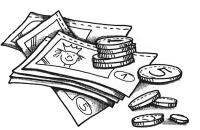
Mike and his sister Sandra are shopping. They need milk , apples , and bread .
Sandra wants to make a cake tomorrow. She needs 6 eggs , 400 grams of flour, a bar of chocolate and some strawberries .
At the checkout, Mike doesn’t have any money , just a few coins in his pocket – oops!
- Most English nouns are countable nouns . This means they can be used in both the singular and the plural. Example: An apple a day keeps the doctor away. Apples are healthy.
- We can put numbers and indefinite articles in front of countable nouns. Example: one banknote, two banknote s one coin, two coin s a cake a sister
- We cannot use singular countable nouns without articles or possessive pronouns (a/the/your). Example: I saw your sister yesterday. ( not: I saw sister yesterday. )Can you give me a hand? ( not: Can you give me hand? ) However, we can use plural countable nouns alone. Example: Did you buy apples ? Yes, but I forgot to buy stawberries .
- We can use some/any /(a) few / many with plural countable nouns. Example: We need some apples. I don’t have any eggs. There are a few strawberries in the fridge. Mike dosen’t have many coins.
- Some collections of countable nouns have a corresponding uncountable noun which describes them as a whole/mass. Example: suitcases, bags, trunks = baggage tables, chairs, couches = furniture peaches, bananas, apples = fruit ( but: one vegetable, two vegetables) socks, dresses, t-shirts = clothes
- Some English nouns are uncountable nouns. This means they only have one form. Most uncountable nouns are singular, but some are plural see below singular/plural uncountable nouns. Example: I drink milk everday. Milk is healthy. ( not: Milks are healthy. ) My trousers are too big. (not: My trouser is too big. )
- We cannot usually put numbers in front of uncountable nouns. Example: money ( not : one money/two moneys ) milk ( not: one milk / two milks ) bread ( not: one bread/ two breads )
- We can use many uncountable nouns without an article or possessive pronoun. Example: We need flour and chocolate to make a cake. ( not: … a flour and a chocolate… ) Can you buy milk on the way home? ( not: can you buy a milk… )
- We use some/any/ little / much with uncountable nouns. Example: We can buy some bread at the bakery. We don’t have any milk. There’s a little flour in the pantry. Mike doesn’t have much money.
- Materials, liquids, and collections are often uncountable nouns. Example: materials – paper, wood, gold, glass etc. liquids – water, milk, oil, coffee, etc. collections – furniture, luggage, traffic etc.
Although we can’t count uncountable nouns themselves, we can use different units, such as a bottle/grain/ glass/loaf/ piece/kilo/gram of, to count them. Here, we are counting the units rather than the actual uncountable nouns.
Some nouns have both a countable and an uncountable form. The countable form usually refers to something more specific and the uncountable form to something more general.
Some uncountable nouns are used in plural and some are used in singular.
- Singular uncountable nouns are used with verbs in the third person singular. Here is a list of common singular uncountable nouns: advice, bread, chewing gum, equipment, fun, furniture, grass, information, knowledge, luck, luggage, money, milk, news, pasta, poetry, progress, rain, research, rice, snow, traffic, travel, weather, work, … Example: money – Money makes the world go around. ( not: Money make the world go around. ) milk – The milk has gone sour. ( not: The milk have gone sour. ) news – The news was wonderful. ( not: The news were wonderful. )
- Plural uncountables are used with verbs in the plural. Here is a list of common plural uncountable nouns: clothes, remains, thanks, groceries, glasses, jeans, scissors, trousers/pants Example: clothes – His clothes are too big. ( not: His clothes is too big. ) groceries – The groceries were expensive.. ( not: The groceries was expensive. )
How good is your English?
Find out with Lingolia’s free grammar test
Take the test!
Maybe later
Countable vs. Uncountable Nouns: A Comprehensive Guide
Marcus Froland
March 28, 2024
Getting a grip on countable and uncountable nouns is like finding the secret key to unlock a big part of English language mastery. It’s not just about knowing a bunch of rules. It’s about seeing the language in action, in the real world, where it makes a tangible difference in how we communicate. This concept might sound a bit dry at first, but stick with us. It’s going to light up parts of English you probably never thought much about.
So, why do these categories matter? In English, whether a noun is countable or uncountable affects everything from verb conjugation to article usage. And yes, it can be a bit of a headache at first. But understanding this distinction is crucial for anyone looking to polish their English . We’re here to break it down, show you the ropes, and make it as painless as possible. Let’s get into it.
Countable nouns are items you can count, like apples or cars. You can use numbers with them and add an ‘s’ at the end to make them plural. For example, “three apples” or “ten cars.” On the other hand, uncountable nouns refer to things you cannot count because they are seen as a whole or a mass. This includes substances like water, air, and sugar. With uncountable nouns, you don’t use ‘s’ for plural because they remain the same in both singular and plural forms. For instance, “some water” or “a lot of air.” Remember, when talking about amounts of uncountable nouns, use words like “some,” “much,” or “a lot of” instead of numbers.
Defining Countable Nouns in English Grammar
Countable nouns, as the name suggests, are those that can be counted and divided into singular and plural forms. To achieve a better understanding of countable nouns, it’s essential to learn how to identify them in sentences, use them along with articles and quantifiers, and analyze their examples in everyday language.
Identifying Countable Nouns in Sentences
Typically, countable nouns can be identified by their ability to take on a plural form. They are generally unique items or ideas and can be combined with other nouns. For instance, ‘dog/dogs’ or ‘idea/ideas’. The singular forms of countable nouns can also use the articles ‘a’ or ‘an’. Moreover, countable nouns can be quantified using numbers or indicators such as ‘one’, ‘two’, ‘three’, and so on.
The Use of Articles and Quantifiers with Countable Nouns
Countable nouns can be accompanied by articles and quantifiers to construct meaningful phrases. Articles like ‘a’, ‘an’, and ‘the’ act as modifiers to specify or denote the noun involved. In addition, quantifiers such as ‘some’, ‘a few’, and ‘many’ can be used to describe the amount or quantity of a countable noun. To inquire about the count of countable nouns, you can pose questions using “How many?” followed by the plural form of the noun.
Countable Noun Examples That Illustrate Common Usage
Countable nouns encompass various entities, including:
- Restaurants (e.g., ‘twenty Italian restaurants’)
- Animals (e.g., ‘a big brown dog’)
- Objects (e.g., ‘several paintings’)
Remember, countable nouns should be used with appropriate verb forms. Singular countable nouns require singular verbs, while plural countable nouns call for plural verbs.
Comprehending countable nouns is an integral part of mastering English grammar, as they help express ideas and information more clearly and accurately. By learning to recognize countable nouns and correctly use articles and quantifiers along with them, you’ll significantly improve your language skills.
The Basics of Uncountable Nouns and Their Usage
Uncountable nouns represent materials, ideas, or collections that cannot be separated into individual elements. They are always singular, such as ‘water’, ‘cheese’, ‘information’, and ‘furniture’. Unlike countable nouns, uncountable nouns do not typically have a plural form and cannot use the articles ‘a’ or ‘an’.
Recognizing and using uncountable nouns correctly can be a challenging aspect of learning English, especially if your native language has different rules for these nouns. Here are some guidelines to help you master the basics of uncountable nouns and their usage:
- Uncountable nouns are always considered as singular, even though they represent substances or collections that cannot be individualized.
- Since uncountable nouns are singular, they are used with singular verbs in sentences, such as “Milk is a good source of calcium.”
- Uncountable nouns cannot be used with the articles ‘a’ or ‘an’. You can use other quantifiers like ‘some’, ‘much’, ‘a lot of’, or ‘a little’ to indicate quantity.
For example: “I need some information about the event.”
Remember : It’s essential to consider the context when using uncountable nouns, as some nouns can switch between countable and uncountable depending on the situation. For instance, ‘hair’ can be both countable and uncountable. When referring to individual strands of hair, it is countable, whereas, when talking about hair as a mass on someone’s head, it is uncountable.
By understanding the basics of uncountable nouns and their usage, you’ll be better equipped to communicate clearly and accurately in English. In the next sections of this article, we’ll talk more about the differences between countable and uncountable nouns, along with practical applications to help you master their utilization.
Countable vs. Uncountable Nouns: Understanding the Difference
When it comes to English grammar, one of the primary distinctions to grasp is the difference between countable and uncountable nouns. To communicate effectively and accurately, it’s essential to understand the nuances of these two types of nouns and their usage in different contexts. In this section, we’ll compare countable and uncountable nouns, explore how some nouns can function as both, and discuss ways of quantifying uncountable nouns.
Comparing Countable and Uncountable Nouns in Context
Countable nouns are distinct, individual items or ideas that can be numbered, while uncountable nouns represent substances or concepts that exist as wholes or masses. The context in a sentence determines how these nouns are used, with countable nouns taking plural verbs and uncountable nouns using singular verbs. To illustrate the difference, consider the following examples:
She has three books on her desk. (countable noun) He needs more information before making a decision. (uncountable noun)
Notice that, in the first example, the countable noun “books” can be directly quantified and takes a plural verb, while the uncountable noun “information” cannot be counted and requires a singular verb.
Nouns That Can be Both Countable and Uncountable
In some cases, nouns can function as both countable and uncountable depending on the context of the sentence. This flexibility in usage highlights the complexity and adaptability of the English language. Examples of such nouns include “time,” “hair,” “light,” and “art.”
There were times when she felt lonely. (countable noun) He spent a lot of time on his studies. (uncountable noun) She has a few strands of white hair . (countable noun) Her hair is very long. (uncountable noun)
The aspect these nouns are describing determines whether they function as countable or uncountable in a sentence.
Quantifying Uncountable Nouns with Expressions of Volume
Although uncountable nouns cannot be directly counted, they can still be quantified using expressions of volume or quantity. These expressions, such as “a pinch of salt,” “a piece of advice,” or “a cup of water,” allow for the communication of specific amounts of uncountable nouns.
- a liter of milk
- a slice of bread
- a scoop of ice cream
Using these expressions, you can effectively convey the quantity of uncountable nouns even though they aren’t countable by nature.
By understanding the differences between countable and uncountable nouns, you’ll greatly improve your English grammar and communication skills. Remember that context is key, and practice using both types of nouns in various situations to increase your mastery of this essential aspect of the English language.
Rules for Using Singular and Plural Forms with Countable Nouns
Understanding the rules for using singular and plural forms with countable nouns is essential to communicate effectively in English. Countable nouns have specific guidelines in their singular and plural forms, which help in determining the correct usage of articles and verb conjugation.
First, let’s discuss the usage of the articles ‘a’ and ‘an’ with countable nouns in their singular form. You should use ‘a’ with countable nouns that begin with a consonant sound, while ‘an’ is used with countable nouns that begin with a vowel sound. For example:
When it comes to plural forms, countable nouns usually follow regular or irregular patterns. Regular countable nouns take an ‘s’ or ‘es’ at the end of the word. For example:
cat → cats dog → dogs watch → watches
Irregular countable nouns, on the other hand, change their spelling when they’re in their plural form. For example:
man → men woman → women child → children
When it comes to verb conjugation, it adjusts to reflect whether the countable noun is singular or plural. Singular countable nouns take singular verbs, while plural countable nouns require plural verbs. For example:
The dog is sleeping. The dogs are sleeping.
Mastering the rules for using singular and plural forms with countable nouns will significantly improve your English communication skills. Remember the following key points:
- Use ‘a’ or ‘an’ with singular countable nouns depending on the sound it begins with.
- Regular countable nouns take an ‘s’ or ‘es’ at the end in their plural form.
- Irregular countable nouns change their spelling when pluralized.
- Verb conjugation adjusts depending on whether the countable noun is singular or plural.
With practice, you’ll become comfortable using countable nouns in both their singular and plural forms and enhance your English communication skills.
Using Uncountable Nouns Correctly: Singular Verbs and Quantifiers
As you develop and refine your English language skills, understanding the correct usage of uncountable nouns becomes critical. In this section, we’ll discuss the singular nature of uncountable nouns, how to use measurements and quantities, and the differences between uncountable nouns in English and other languages.
The Singular Nature of Uncountable Nouns
Uncountable nouns are, by definition, always singular in form. They cannot be divided into separate units, and as such, require singular verb forms. Additionally, they do not have a plural form, nor can they be used with articles such as ‘a’ or ‘an’. For example:
Incorrect: I have a luggage. Correct: I have some luggage.
As demonstrated, uncountable nouns must be paired with singular verb forms and suitable quantifiers instead of articles. This may seem daunting initially, but practice and exposure will make this usage more natural over time.
When to Use Measurements and Quantities with Uncountable Nouns
Engaging in precise communication requires expressing quantities related to uncountable nouns. To effectively achieve this, you will need to utilize appropriate units of measurement or quantifying expressions, such as ‘a cup of’, ‘a lot of’, ‘much’, or ‘1kg of’. Some examples include:
- A cup of coffee
- A pinch of salt
- 1 liter of milk
By using such measurements and quantities, you can provide clarity to your statements involving uncountable nouns that require specific amounts.
Uncountable Nouns in Different Languages and English Equivalents
Many English learners face challenges when encountering nouns that are considered countable in their native language but uncountable in English. It is essential to recognize this nuance to ensure proper usage according to English grammar rules. Some common noun examples include:
- Advice (often countable in other languages)
- Luggage (often countable in other languages)
- News (often countable in other languages)
- Work (often countable in other languages)
Adapting to these differences might be tricky, but it is important to remember that consistency in usage following English grammar conventions ultimately results in clear and effective communication.
Practical Applications: Exercises to Master Countable and Uncountable Nouns
To effectively master countable and uncountable nouns, engaging in practical exercises can be incredibly beneficial. These activities will help improve your understanding and application of the different rules and uses of both types of nouns. Three helpful exercises to try include identifying noun types in sentences, determining appropriate articles and quantifiers, and restructuring sentences to correctly express quantities.
When working on identifying noun types, find texts from a variety of sources, such as newspapers, novels, or websites, and highlight the countable and uncountable nouns. By practicing this, you’ll become more adept at recognizing these nouns in context. For example, circle words like “books” (countable) and underline words like “knowledge” (uncountable).
Next, focus on utilizing articles and quantifiers correctly. Take a list of countable and uncountable nouns, and pair each with the appropriate article or quantifier. For instance, use ‘a few’ with countables like ‘dogs’ or ‘bottles’, and ‘some’ or ‘a lot of’ with uncountables like ‘coffee’ or ‘information’. Lastly, practice restructuring sentences in order to accurately express quantities. Challenging yourself in this manner will solidify your understanding of how to use countable and uncountable nouns effectively in your writing and speaking.
Share this:
Two minute english.
English Made Simple: Two-Minute Lessons for Busy Learners
Copyright © 2024 • TwoMinEnglish.com

All you need to know about countable and uncountable nouns
What’s the difference between countable and uncountable nouns , and what grammar rules do you need to know to use them correctly?
Also known as count and noncount nouns , this vocabulary point can trip you up when you’re learning English as a second language. It’s especially tricky because:
- There are no concrete rules for classifying nouns as countable or uncountable (although there are some general guidelines that we will explain later).
- Certain nouns that are countable in other languages may be uncountable in English, so you’ll have to un-learn what you know from your native language and learn a different set of rules for English words.
So, let’s take a detailed look at countable vs uncountable nouns, with plenty of examples showing how to use them with the correct articles, quantifiers, and other determiners.
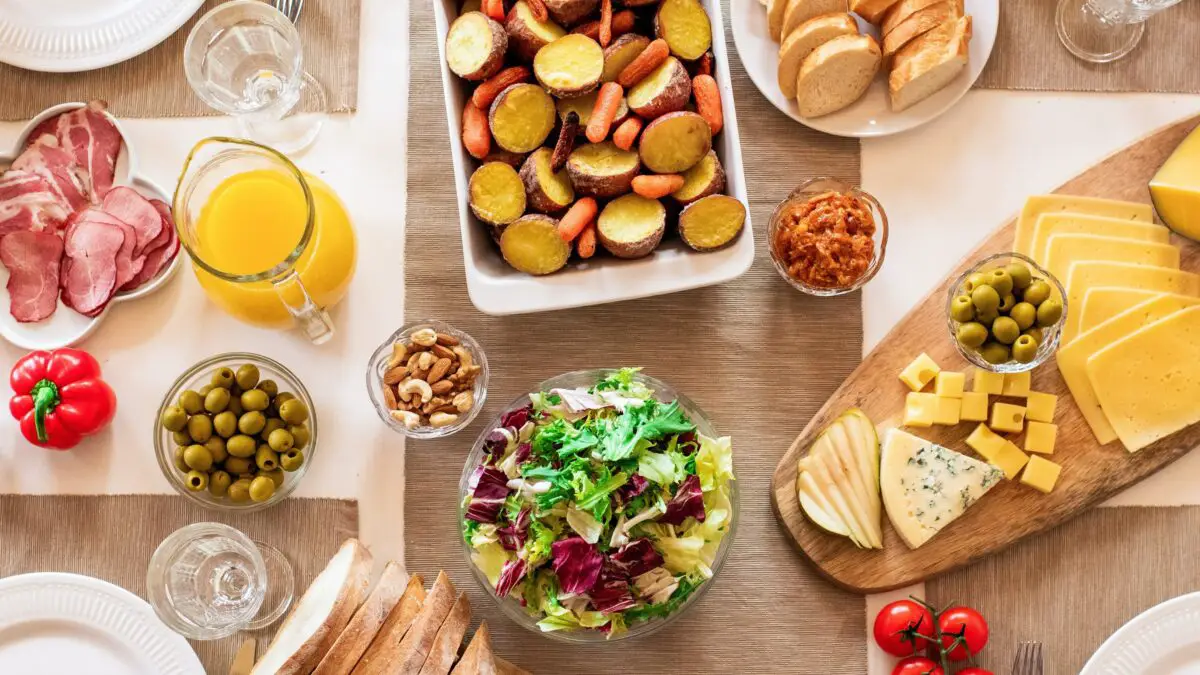
The basics of countable and uncountable nouns
What is a countable noun.
A countable noun (also called a count noun) is a noun naming something that can be counted using standard numbers. Countable nouns usually have singular and plural forms.
Examples of countable nouns include chair, table, rabbit, page, part, and lemon .
So, we can have one chair, five tables, ten rabbits, twenty-three lemons, and three hundred pages .
You are probably already familiar with this pattern of counting things in English.
What is an uncountable noun?
An uncountable noun (also called a mass noun or a non-count noun) is a noun naming something that cannot be counted in English using standard numbers. These nouns cannot be made plural.
Examples of uncountable nouns include rice, money, advice, news, and happiness .
We cannot have one rice, five monies, two advices, or a happiness .
Instead, we must use different determiners to quantify these particular things: a cup of rice , a bag of money , and a piece of advice .
Now you know these basics, it’s time to take a deeper look at what this means in practice. You need to know whether you’re dealing with a countable or uncountable noun so you can select the correct determiners and plural forms in your writing and speech.
Rules for using countable nouns
We’ll begin by going over the rules for using countable nouns, since these are most straightforward.
Countable nouns:
- Can be separated into whole, individual, countable units
- Broadly refer to people, places, and things
- Have a singular and a plural form (with a few exceptions like sheep, deer, fish) – see this site for more about how to form plurals
- May take indefinite articles (a/an) as well as the definite article (the)
- May take other determiners such as this/that/these/those, some/any/few/many/several, my/your/his/her/our/their
- To form a question about a countable noun, we say ‘How many…’
Countable noun example sentences
Most of the nouns we use in English are countable. Here are some example sentences showing correct usage:
- I have two cats as pets .
- She bought a few books from the store .
- We went to the zoo and saw several giraffes .
- The school has six classrooms for different subjects .
- He has a collection of ten stamps .
- My father owns a few bikes .
- The store has a variety of balloons in different colors.
- He has five siblings : three brothers and two sisters .
- There are many oranges in the fruit basket .
- The bakery doesn’t have any bread left.
- I would like to buy that handbag .
- How many meals should I order at the restaurant ?
Read about the difference between few vs a few here.
Rules for using uncountable nouns
Uncountable nouns are used less often in English, and they:
- Are abstract ideas, qualities, or masses that can’t be separated and counted individually
- Do not have a plural form and are treated as singular nouns (and therefore take the singular form of the verb)
- May take the definite article (the) but do not take the indefinite articles (a/an)
- May take other determiners such as much/little/less/any/some and my/your/his/her/our/their
- Can be quantified with phrases that contain countable nouns (e.g. a bag of rice)
- To form a question about an uncountable noun, we say ‘How much…’
See also: What’s the difference between less and fewer?
Uncountable noun examples
We can group uncountable nouns into some broad categories. Although we cannot list them all here, the following groups are a general guide that may make it easier for you to identify others in the future:
This may seem like a long list of uncountable nouns; however, there are hundreds more.
Quantifying an uncountable noun
Although we can’t quantify uncountable nouns using numbers, we can add a countable unit of measurement to refer to one or more quantities of these things. Below are some of the most common quantifiers we can use to refer to things that are uncountable.
- A piece of… advice, art, cheese, equipment, evidence, furniture, homework, information, luck, luggage, music, news, paper, poetry, publicity, rubbish, software
- A bottle of… beer, water, wine, sauce, salad dressing
- A carton of… juice, milk, cream
- A packet of… ketchup, rice, gum
- A plate/bowl of… cereal, pasta, rice
- A drop of… blood, oil, rain, water
- A game of… badminton, chess, football, soccer, tennis
- A ray of… hope, light, sun
- A grain of… sand, rice, sugar, dignity
- A cube of… ice, sugar
- A blob of… toothpaste, mayonnaise, glue
- A pane of glass
- A round of applause
- A bar of soap
- A mode of transport
- A bolt of lightning
- A blade of grass
- A rasher of bacon
- A sheet of paper
Determiners for count and noncount nouns
You’ll have seen from the examples above that certain determiners can only be used for one type of noun, whereas others can be used with both countable and uncountable nouns. Here’s a handy reference table for these, although this is not an exhaustive list.
Most other adjectives can modify both countable and uncountable nouns.
See also: What’s the difference between advice vs advise?
Some nouns can be countable and uncountable
You might often hear people say something like “I take two sugars in my tea”. What they really mean is “two teaspoons of sugar”, but the noun “sugar” has taken on that meaning and become countable.
In this way, uncountable nouns can sometimes be used as countable when referring to a complete unit or measurement of something, normally in relation to food and beverages. Here are some more examples:
- I’ll have three coffees , please. (three cups of coffee)
- I’ve had too many beers tonight! (glasses/cans/bottles of beer)
- Could I get two more ketchups ? (two sachets of ketchup)
Uncountable nouns may also be used as countable when they refer to a specific type, example, or category of something . For example:
- You should have at least five different cheeses on your cheese board.
- The best wines in the world are produced in France.
- We used three woods to make this beautiful box.
- They encountered a lot of difficulties while completing the project.
- These juices are all freshly squeezed.
These plural countable nouns are exceptions to the rule given earlier.
Nouns with different countable and uncountable meanings
To make things even more confusing, certain nouns in English have two or more meanings. When a noun refers to different things, one countable and one uncountable, you must remember which is which in order to form a correct sentence. Here are some common examples of words with dual meanings:
As you can see, English can be hard to learn . Fortunately, you can always check in a dictionary to see whether a noun is countable or uncountable. Some dictionaries, such as Oxford Dictionaries , specify this in the definition.
We hope this information about countable vs uncountable nouns has been helpful. It can be quite a tricky English grammar topic to get right because, even once you have mastered the rules of count and noncount nouns, there is still no hard-and-fast way to know which words are which, unless you look them up.
Leave a comment below if you have any more questions about this topic or want to check your understanding of a particular point we’ve mentioned.
Leave a Reply Cancel reply
Your email address will not be published. Required fields are marked *
Save my name, email, and site URL in my browser for next time I post a comment.
Sign me up for the newsletter!
What are countable and uncountable nouns? - Easy Learning Grammar
- whether or not the noun gives us information about singular and plural number .
- the other words that can be used in the same noun phrase.
- things that are not normally thought of as countable.
- qualities or abstract ideas.
- Verbal nouns, which are formed from the present participle of verbs, can also be used as uncountable nouns.
Quick word challenge
Quiz Review
Score: 0 / 5

Countable and Uncountable Nouns
What are countable and uncountable nouns, and how do we use them in English grammar? Let’s learn all about these two different types of nouns today! There are some details you need to know in order to make sure your sentences with uncountable nouns are grammatically correct.

Download free PDF + quiz
Countable Nouns
Countable nouns are things we can easily count – for example, cats:
- My brother has a cat.
- My sister has two cats.
- My friend has three cats.
Other examples of countable nouns:
- Things – book, table, computer, banana, shirt, television, pen, house
- People – man, woman, child, friend, brother, sister, uncle, teacher, boss
With most countable nouns, we add -s to make them plural. But there are some irregular plural nouns – like person/people, man/men, child/children, and others.
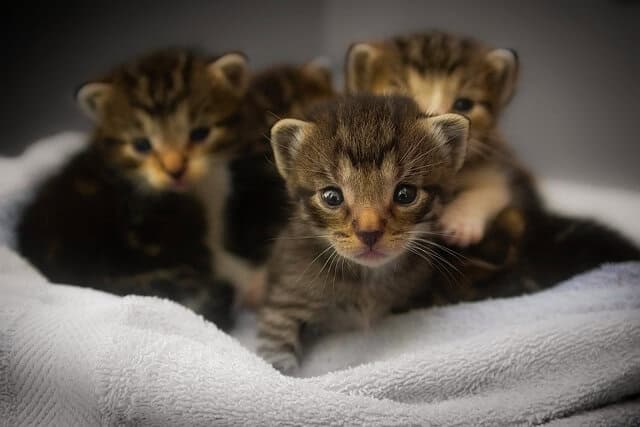
“Cat” is a countable noun – one cat, two cats, three cats
Uncountable Nouns
Uncountable nouns (or non-count nouns) are words that we can’t count, or can’t easily divide into separate parts:
- Concepts – love, fun, sadness, work, money, peace, safety
- Information – advice, information, news, knowledge
- Categories – music, furniture, equipment, jewelry, literature, meat
- Liquids and foods that can’t be counted – water, butter, rice, flour, milk
Some English learners think that all countable nouns are concrete nouns (physical things), and all uncountable nouns are abstract nouns (non-physical things) – but this is not true!
- We have abstract nouns that are countable, like ideas, beliefs, hopes, dreams.
- We have concrete nouns that are uncountable, like furniture, luggage, butter, and milk.
Learn more in this lesson on 10 types of nouns.
Learn about words that can be both countable and uncountable!
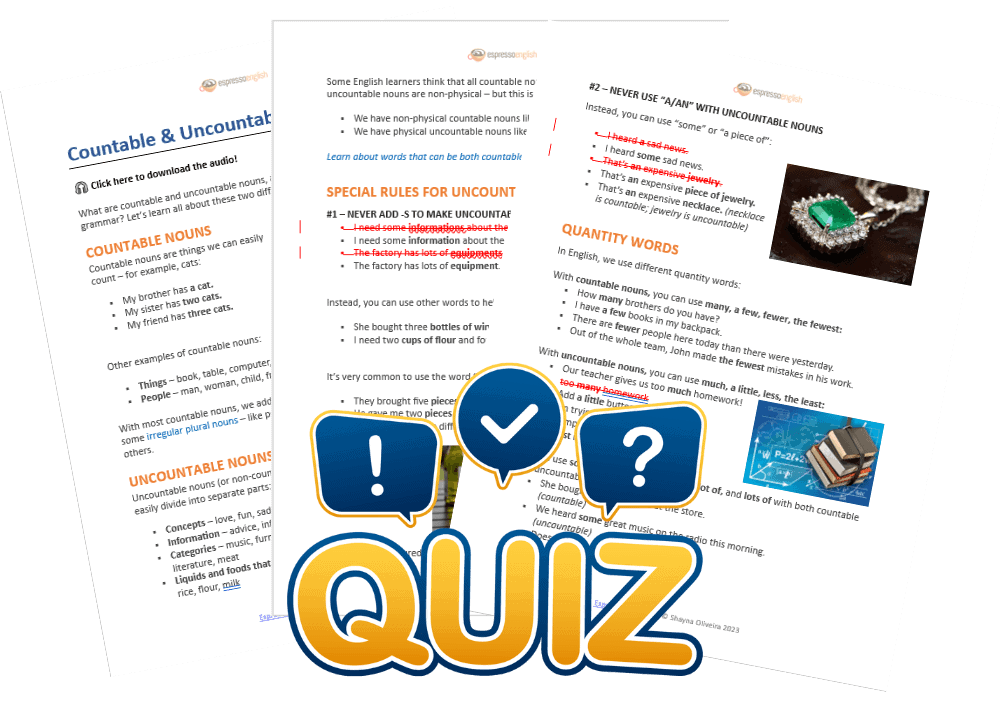
Special rules for uncountable nouns
#1 – never add -s to make uncountable nouns plural:.
- I need some informations about the course.
- I need some information about the course.
- The factory has lots of equipments .
- The factory has lots of equipment .
In some other languages, “information” can be made plural – but it’s incorrect in English, because it’s an uncountable noun!
Instead, you can use other words to help create a plural form:
- She bought three bottles of wine and five boxes of rice.
- I need two cups of flour and four tablespoons of butter for this recipe.
It’s very common to use the word “piece”:
- They brought five pieces of luggage on their vacation.
- He gave me two pieces of advice: eat less and exercise more.
- I’m practicing three difficult pieces of piano music.

Don’t say “He poured two wines .” Instead, say “He poured two glasses of wine .”
Uncountable nouns by themselves take singular verbs, since they are grammatically singular nouns:
- The furniture is old. (not “are old”)
- His advice was good. (not “were good”)
However, if we add one of those “helping words” to create a plural form, then we use plural verbs:
- Those three crates of furniture are heavy. (crates –> are)
- His two pieces of advice were good. (pieces –> were)
#2 – Never use the indefinite article “a/an” with uncountable nouns
Instead, you can use “some” or “a piece of”:
- I heard a sad news.
- I heard some sad news.
- That’s an expensive jewelry.
- That’s an expensive piece of jewelry.
- That’s an expensive necklace. (necklace is countable; jewelry is uncountable)
However, the definite article (“the”) can be used with both countable nouns and uncountable nouns:
- The facts are accurate. (countable)
- The information is accurate. (uncountable)
- The necklace is expensive. (countable)
- The jewelry is expensive. (uncountable)
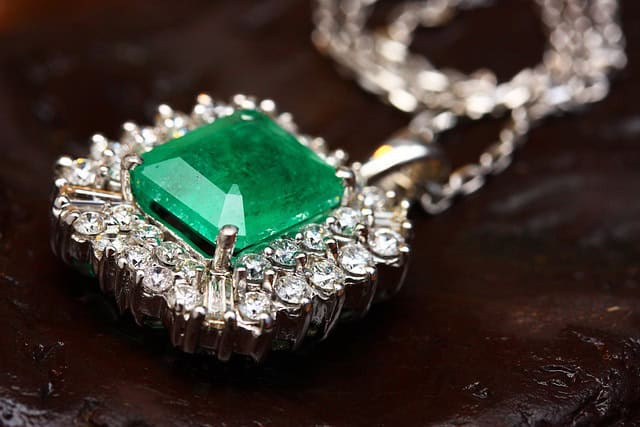
Don’t say “That’s an expensive jewelry .” Instead, say “That’s an expensive piece of jewelry .” or “That’s an expensive necklace .”
Expressing quantities of countable and uncountable nouns
In English, we use different quantity words:
With countable nouns, you can use many, a few, fewer, the fewest:
- How many brothers do you have?
- I have a few books in my backpack.
- There are fewer people here today than there were yesterday.
- Out of the whole team, John made the fewest mistakes in his work.
With uncountable nouns, you can use much, a little, less, the least:
- Our teacher gives us too much homework!
- Add a little butter to the recipe.
- I’m trying to eat less red meat.
- Compared to my friends, I make the least money.

Our teacher gives us too much homework! (not “too many homework”)
We can use some, any, more, the most, a lot of, and lots of with both countable and uncountable nouns:
- She bought some bananas at the store. (countable)
- We heard some great music on the radio this morning. (uncountable)
- Does he have any children? (countable)
- He doesn’t have any furniture in his new house. (uncountable)
- We need to buy more bananas. (countable)
- We need to buy more equipment. (uncountable)
- I’ve read the most books in my class. (countable)
- The boss gave me the most work. (uncountable)
- She has a lot of / lots of friends. (countable)
- We’re having a lot of / lots of fun. (uncountable)

He doesn’t have any furniture in his new house.
Countable and Uncountable Nouns QUIZ!
Uncountable noun list.
Most nouns in English are countable – but here are some common uncountable nouns organized by category.
Liquids, grains, and semi-solids:
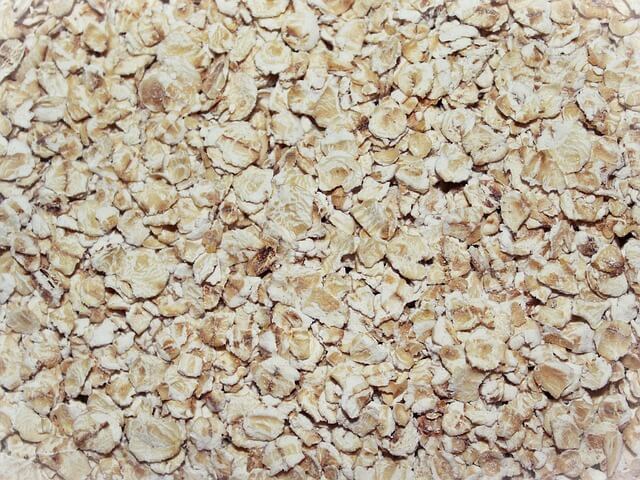
“Oatmeal” is an uncountable noun in English
Categories or Mass Nouns:
- Agriculture
- Entertainment
- Infrastructure
- Transportation
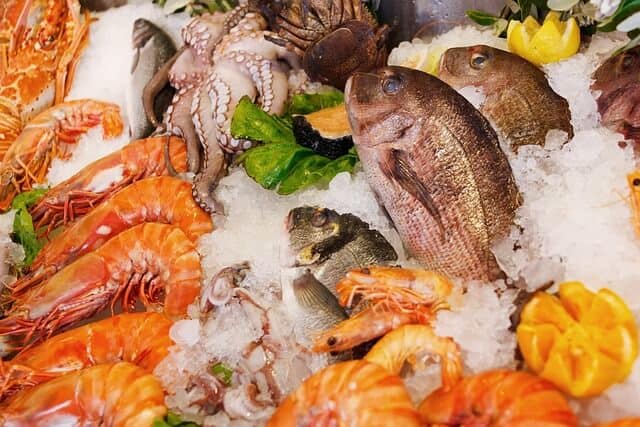
“Seafood” is an uncountable noun in English
Abstract ideas or qualities:
- Intelligence
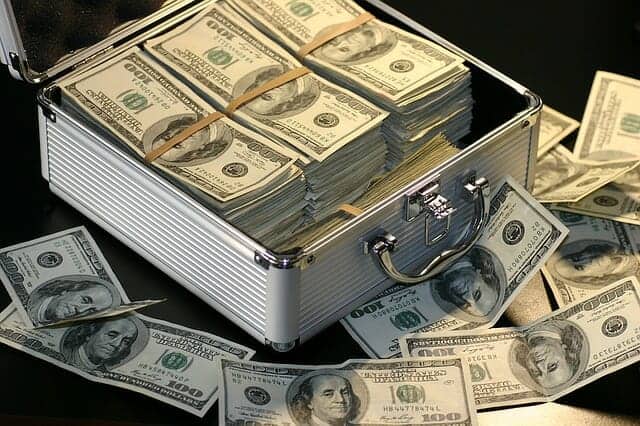
“Money” is an uncountable noun in English, but “dollars,” “Euros,” “pounds,” etc. are countable.

Many nouns for emotions are uncountable, like “happiness”
Master the details of English grammar:


More Espresso English Lessons:
About the author.
Shayna Oliveira
Shayna Oliveira is the founder of Espresso English, where you can improve your English fast - even if you don’t have much time to study. Millions of students are learning English from her clear, friendly, and practical lessons! Shayna is a CELTA-certified teacher with 10+ years of experience helping English learners become more fluent in her English courses.
Are _____ _______?
It is rude to say this so please don't. It's here to practice vocabulary and structure.
Are you old?

Are we old?

Nouns - Countable and Uncountable
Review of countable nouns.
Two chair s
Three table s
Three chair s
Four table s
Five chair s
Six table s
These nouns are easy to count so we count them.
Review of uncountable nouns
Liquids / hard to count.

There are different amounts of water in each picture, but all are still called water.

There are different amounts of rice in each picture, but all are still called rice.
Uncountable material but with countable forms

cake - uncountable

slice of cake - countable form = slice

cake - countable as a whole cake

piece of cake - countable form = piece
'Cake' is uncountable but it has three countable forms: slice, whole and piece. For example:
two slices of cake
three cakes
four pieces of cake
'Chocolate' is also uncountable but it has three countable forms: bar, piece and whole.
Nouns where 'pieces' is the countable form
We will look at some uncountable nouns where their countable form is 'piece'.
Is 'food' countable or uncountable?
- 'Food' is uncountable. Let's look at why.
One piece of food
Two pieces of food
One pizza
One hamburger
Six pieces of food
Four pizzas
Two hamburgers
On their own, pizzas and hamburgers can be counted. When they are together and called 'food', they can not be counted.

There is a lot of food on the table. - Correct
There is a lot of food s on the table. - Incorrect
'Food' is uncountable and so 'foods' is incorrect.

This is what you need to make Mexican food. - Correct
This is what you need to make Mexican food s . - Incorrect

When I go to a pub, I have snack food. - Correct
When I go to a pub, I have snack food s . - Incorrect
There are lots of different types of food here but 'food' is uncountable so it is without the 's'.
Food and the countable form 'pieces'

Five pieces of food

Lots of pieces of food
'Piece' can be counted (one piece, two pieces, three pieces, some pieces etc.) but 'food' remains uncountable.
Is 'furniture' countable or uncountable?
- 'Furniture' is uncountable. Let's look at why.
One piece of furniture
Four chairs
Two tables
Two pieces of furniture
Six pieces of furniture
Furniture is a noun which describes things in the home. Chairs, tables, sofas, beds, wardrobes etc are pieces of furniture.

There's a lot of furniture.

There's a little furniture.
Both these pictures have furniture. One has more than the other but we still use the uncountable noun 'furniture'. We never say 'furniture s '.
'Pieces' of furniture

There are two chairs and one table in the room. COUNTABLE ITEMS
There are three pieces of furniture in the room. COUNTABLE FORM
There is some furniture in the room. UNCOUNTABLE

There are six chairs, one sofa and two lamps in the room.
There are nine pieces of furniture in the room.
There is a lot of furniture in the room.
Other example sentences
I need to buy a lot of new furniture for my new house.
I'm looking at some new furniture for my bedroom. What do you recommend?
Old furniture is my favourite. I love the dated look.
Wooden furniture is the best, but only dark wood.
I have to make all the flat-pack furniture that came yesterday. I'm going to be tired tomorrow.
Is 'homework' countable or uncountable?
- 'Homework' is uncountable. Let's look at why.
One piece of English homework
One piece of maths homework
Three piece s of English homework
Four piece s of maths homework
The countable form of homework is 'piece'.
Conversation
Mum: Did you get any homework today?
Son: Yes, I got two pieces of English and some maths.
Mum: When are they due?
Son: The maths is for tomorrow and the English is for next Monday.
Breaking the conversation down
Mum is asking if her son if he received homework. 'Any' is used to prompt a more specific answer - not just 'yes' or 'no'.
The son replies with the countable form of 'homework' (pieces) for English and the uncountable determiner for maths (some). We do not know if there is one piece, two pieces, or more. We do know there is not a lot.
Mum asks when the pieces of homework should be given back to the teachers.
The maths homework is due for tomorrow and the English homework (two pieces but IT IS NOT 'homeworks') is due next Monday.
Incorrect examples
I have four homework s due tomorrow.
She has not done her three homework s .
My teacher gave me three maths homework s and two science homework s .
Correct examples
I have four pieces of homework due tomorrow.
She has not done her three pieces of homework.
My teacher gave me three pieces of maths homework and two pieces of science homework.
You can play when you've finished all your homework.
Did you get much homework today?
I hate Mr. Simpson - he always gives at least two pieces of homework per day.
Doing homework will never be fun.
If I don't understand the homework, I ask my older brother.
Is 'fruit' countable or uncountable?
- Fruit is uncountable. Let's see why:
One piece of fruit
Two pieces of fruit
Four apples
Four pieces of fruit
Three strawberries
Three pieces of fruit
Eight pieces of fruit
The countable form of fruit is 'piece'.

There is a lot of fruit.

There is some fruit.

There are three piece of fruit
A: Can I have some fruit please?
B: How many pieces to do want?
A: Can I have three apples, one pineapple and a few oranges?
B: Here you go.
A: Did you buy any fruit?
B: Yes, I got a few pieces.
A: What type of fruit did you buy?
B: I got three peaches.
A: Oh, lovely.
Fruit is my favourite dessert to have. It's so refreshing.
What kind of fruit do you like?
Would you like a piece of fruit? I've got some delicious pears today.
You never put tomato in a fruit salad!
I make a smoothie every morning using lots of different fruit.
'Furniture', 'Homework' and 'Fruit' are uncountable nouns.
They are words for groups of different items .
Two chairs and one table is a group of furniture.
There is a lot of fruit .
NOTE: there are lots of pieces of fruit. Fruit is the name of a group of items, like apples, pears, bananas etc.
One chair, one table and two sofas is a group of furniture.
There is some fruit .
NOTE: there are three pieces of fruit. Fruit is the name of a group of items, like apples, pears, bananas etc.
More examples
Clothes is an uncountable noun. It is used to describe a group of different items.
The countable form is 'piece' or 'item'.

There are a lot of clothes.
There are about 25 pieces of clothes.

There are not a lot of clothes.
There are three pieces of clothes.
Sushi is an uncountable noun. It is the game of a group of different items.
The countable form is 'piece'.

There are six pieces of sushi. = COUNTABLE FORM
There is some sushi. = UNCOUNTABLE

There are 12 pieces of sushi. = COUNTABLE FORM
There is a lot of sushi. = UNCOUNTABLE

There is one piece of sushi. = COUNTABLE FORM
There is not a lot of sushi. = UNCOUNTABLE

Countable / uncountable
Intermediate level
Worksheets - handouts
Exercises - elementary level
- Countable / uncountable - test 1
- Countable / uncountable - test 2
- Countable / uncountable nouns
- Count / non-count words 1
- Countable or uncountable
- Countable - uncountable nouns
- A, some, any
Countable and Uncountable Nouns: the Complete Guide (2021)
Countable Nouns
Singular and plural, determiners, uncountable nouns, making uncountable things countable – quantity expressions, nouns that can be countable and uncountable, how to use countables and uncountables, grammar in action.
You probably already know that nouns are words that name people, places, things, or ideas. You might also remember that there are different categories of nouns based on certain features they share. For example we can distinguish abstract and concrete nouns .
Another way we can categorize nouns is whether they are countable or uncountable . In this article, we’ll explain the difference between these two categories, look at the examples of both and see why it is important to know whether a noun is countable or uncountable.
So, as we’ve already mentioned, nouns in English can be countable or uncountable .
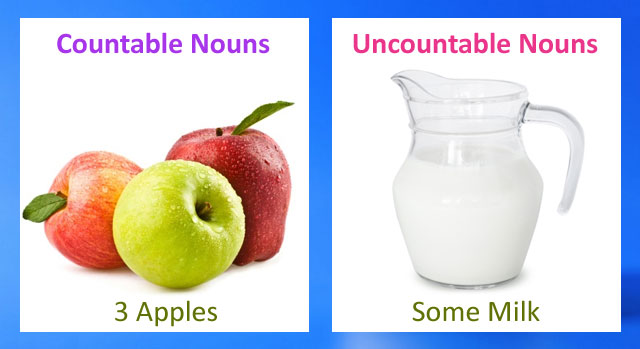
As their name suggests, countable nouns are those that refer to something that can be counted . For example, we can count cars :
- one car, two cars, three cars…
Even if the number might be extraordinarily high (like counting all the stars in the sky), countable nouns can be individually counted.
Some more examples of countable nouns:
- car, man, bottle, house, key, idea, accident
- dog, cat, animal, man, person
- cup, plate, fork
- table, chair, suitcase, bag, etc.
Concrete nouns may be countable.
- New cars are very expensive.
- I got some books from the library yesterday.
Collective nouns (words that denote a group of people or things) are countable.
- She attended three classes last week.
- This house is perfect for two families .
Even some proper nouns are countable.
- There are many Italians in New York.
- There are five Johns in the room.
Since countable nouns can be counted, they can be singular (=one) and plural (=two or more):
You probably remember that plural forms of nouns usually have the ‘ -s ‘ (‘ -es ‘) ending. For example:
- There is an egg .
- There are four eggs .
- They’ve got great toys for babies here.
- We need to get some new dishes for this evening.
Learn more about how to form the plural forms here .
Note that singular verbs are used with singular countable nouns, while plural verbs are used with plural countable nouns.
- Your book is on the kitchen table.
- How many candles are on that birthday cake?
Countable nouns can be used with articles such as a/an and the, numbers or quantifiers such as a few, a lot and many . These words in general are called determiners because they describe nouns, i.e. make it clear what a noun refers to. For example:
- I bought a jacket and a shirt .
- My house is near the center.
- There’s a lot of flowers in the garden .
- She’s got two sisters and a younger brother .
You can’t use singular countable nouns alone, i.e. without a/the/my, etc.
- We can’t get into the house without a key . (not key)
- I want a banana . (not banana)
- Paris is an interesting city .
We use ‘ a ’ and ‘ an ’ with singular countable nouns when we do not need to make clear which person or thing we are talking about:
- an accident, a banana, a couch, a dream, a neighbourhood.
When people can understand which person or thing we mean, we use ‘ the ‘ with singular and plural countable nouns:
- The pie won the prize but the judges didn’t like the cookies .
We use no article (the so-called ‘ zero article ‘) with plural countable nouns and with uncountable nouns when we are talking in general:
- Dogs usually don’t like cats .
- Good health is more important than money .
Unlike singular countable nouns, plural countable nouns can be used alone:
- I like bananas .
- Accidents can be prevented.
We can use ‘ some ’ and ‘ any ‘ with plural countable nouns meaning ‘ a bit, a quantity of ‘. We use ‘some’ in affirmative sentences and ‘any’ in negative sentences and questions :
- I’d like some bananas , please.
- Did you buy any apples ?
We use ‘ many ‘ and ‘ few ‘ with plural countable nouns.
- We didn’t take many pictures.
- I have a few words to say.
Uncountable nouns are seen as a whole or mass. They cannot be separated or counted and come in a state or quantity that is impossible to count . For example, we cannot count air:
- one air, two airs, three airs…
Examples of uncountable nouns include:
– abstract nouns : homework, knowledge, money, permission, research, traffic, travel – ideas and experiences : advice, information, progress, news, luck, fun, work – materials and substances : water, rice, cement, gold, milk – food and drinks : juice, wine, meat, rice, bread, cheese, coffee – weather words : weather, thunder, lightning, rain, snow – names for groups or collections of things : furniture, equipment, rubbish, luggage
Uncountable nouns are always considered to be singular . They have no plural, even if they end in ‘-s ‘. The verb form is singular and we can use some .
- Put some sugar .
- How much wine is there?
- Your hair is really long!
- The news was a complete shock!
Thus, uncountable nouns have always only one form:
money — the money — my money — some money — much money etc.
- I’ve got some money .
- There isn’t much mone y in the box.
- Money isn’t everything.
There are, however, some uncountable nouns that are plural and are followed by a plural verb . Be careful with the following words:
- Your clean clothes are on the bed.
- Your new jeans look great!
Uncountable nouns can stand alone or be used with determiners (e.g. my, her , some, any , no , the, this, that ) and expressions of quantity (e.g. a lot of, (a) little, some, much ):
- She’s been studying hard and has made a lot of progress .
- This coffee is a bit old, I’m afraid.
- I’d like some water , please.
- There is a lot of snow on the road.
- They gave me some information about the courses.
Since uncountable nouns have no plural, we can’t use ‘ a ’ and ‘ an ’ with them:
As we have seen, some determiners can be used with all nouns whether countable or uncountable. For example, the word ‘ some ‘ can be used with both:
- I would like some crackers.
- He would like some water.
However, other determiners can only be used with countable nouns and some can only be used with uncountable nouns. For example, the article ‘ a ‘ is used with singular countable nouns and isn’t used with uncountable nouns:
- I would like a sandwich .
- I would like some juice . (Not: I would like a juice. )
With uncountable nouns we use the determiners ‘ much ‘ and ‘ little ‘:
- There isn’t much milk in the bottle.
- They have little money .
Uncountable nouns can be paired with words expressing plural concept. These are words and phrases like ‘ a glass of ’, ‘ a bottle of ’ or ‘ a piece of ’ or words for containers and measures. We cannot say ‘an information’ or ‘a music’. But we can say a ‘something’ of .
In short, uncountable nouns can become countable when the noun is in a container. For example:
- some sugar — a bag of sugar
- some water — a bottle of water
- some cereal — a bowl of cereal
Thus, you can’t say ‘two waters’ but you can say ‘two bottles of water’ .
- Try to drink at least eight glasses of water each day.
- I’d like a glass of water , please.
- We bought two bottles of wine .
- This is a beautiful piece of music .
- I bought you a bar of chocolate .
Sometimes uncountable nouns are used as countable, to mean ‘ a measure of something ’ or ‘ a type of something ’:
- Can I have two teas and one coffee , please? (two cups of tea and one cup of coffee …?)
- There are some juices on the table. (different types of juice)
Sometimes, the same noun can be both countable and uncountable, often with a change of meaning. The meaning will depend of the context.
Consider the following examples:
- Our house has seven rooms . – Is there room for me to sit here? (‘rooms’ vs ‘space’)
- Have you got a paper to read? – I want to write a letter. Have you got some paper ? (‘magazine’ vs ‘paper’)
- There are four lights in our bedroom. – Close the curtain. There’s too much light ! (‘lamps’ vs ‘light’)
- I had some interesting experiences while I was travelling. – They offered me the job because I had a lot of experience . (‘things that happened to me’ vs ‘not experiences’)
Why is it so important to know whether a noun is countable or uncountable? That’s because we use different words with countables and uncountables — see the rules below.
In positive sentences, we use:
In negative sentences, we use:
See more examples:
To make pancakes…
- … you need a frying pan .
- … you don’t need an electric mixer .
- … you need some plates .
- … you don’t need any chopsticks .
In questions, we use a/an , any and how many :
In questions, we use any and how much :
LET’S SUMMARIZE:

Note the verb forms. Singular nouns take singular verbs, while plural nouns take plural verbs:
- There is a frying pan. (singular noun)
- There aren’t any eggs. (plural noun)
- There is some milk. (uncountable noun)
- There isn’t any flour. (uncountable noun)
So, how should we use expressions with countable and uncountable nouns in everyday situations?
1. We use a / an , some and any with nouns to talk or ask about the quantity of something, for example, when talking about food:
- Have you got any cheese or meat ? I could make a pasta dish . – Great idea. I’ve got some tomatoes and a chilly pepper . We could add them, too.
2. We use a / an and some with nouns to make requests, for example, when we are at a restaurant:
- We’ll have some water and some bread , please. – I’d also like a glass of orange juice .
3. We use some with nouns when we offer something, for example, to our guests:
- Would you like some toasts or some cake ? – Yes, with pleasure.
Here’s a good video from mmmEmglish explaining what countable and uncountable nouns are and how they are used:
Abstract and Concrete Nouns
Plural and Singular Nouns
Pronouns and Determiners: Quantifiers
Leave a Comment Cancel reply
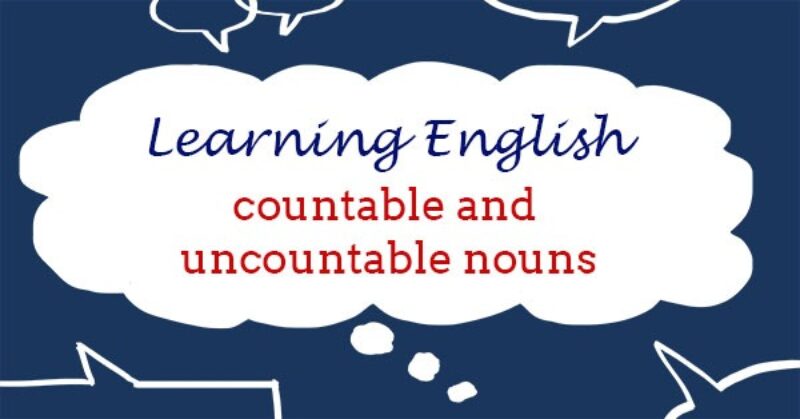
Countable and uncountable nouns

Countable nouns are the words for things that we can count. They have singular and plural forms. They can have a or an in front of them. If they are singular, they must have a word like a , an , the or his in front of them.
She ate an apple.
Where shall I put my coat?
He took the dogs out for a walk.
His children have left home.
Uncountable nouns are the words for things that cannot be counted. They cannot have a or an in front of them, and they do not have a plural form.
I asked her for some advice.
Mix the water with the flour.
Here are some very common uncountable nouns. Be careful with them, because they may be countable in other languages. Remember that the verb that goes with them must be singular.
advice air anger beauty behaviour damage furniture
happiness homework information luggage meat progress knowledge
money safety water work
The meat was not cooked properly.
The damage has not been repaired.
The information he gave us was correct.
Her behaviour upsets everyone.
When it is necessary to think of an item as countable, it has to be used with a partitive noun.
He bought seven sheets of cardboard.
Let me give you a piece of advice.
They bought several items of furniture.
Come back for more blogs on using English in everyday situations: https://blog.collinsdictionary.com/language-learners/learning-english/
All opinions expressed on this blog are those of the individual writers, and do not necessarily reflect the opinions or policies of Collins, or its parent company, HarperCollins.
Related Articles
What’s the difference between anniversary and birthday, what’s the difference between careful, careless and carefree, what’s the difference between cupboard, wardrobe and closet, what’s the difference between latter and former, congratulating someone, other articles.

Spanish word of the week: radio

French word of the week: ranger

Spanish word of the week: editorial
Sign up for the newsletter.
Get the latest news
- English Grammar
- Parts of Speech
- Countable And Uncountable Nouns
Countable and Uncountable Nouns - Meaning, Definition, Usage and Examples
Nouns , as you already know, are words that are used to name a person, place, animal, thing or idea. Having learnt about the types of nouns, singular nouns and plural nouns, you might be wondering what countable and uncountable nouns are. Is it any different from singular and plural nouns? Well, let’s find out. Go through the article to learn all about it, the meaning and definition of countable and uncountable nouns, and how they are formed and used in sentences along with examples.
Table of Contents
List of countable nouns, list of uncountable nouns, using countable nouns and uncountable nouns in sentences, examples of countable and uncountable nouns, check your understanding of countable and uncountable nouns, frequently asked questions on countable and uncountable nouns, what is a countable noun – meaning and definition.
A countable noun, as the name suggests, refers to nouns that can literally be counted. The number or quantity of countable nouns can be quoted exactly. To identify if a noun is countable, you can ask the question ‘how many’. A countable noun, according to the Cambridge Dictionary, is defined as “a noun that has both a singular and a plural form and names something that can be counted because there can be one or more of it”. The Macmillan Dictionary defines a countable noun as “a noun that has singular and plural forms. In the plural, countable nouns usually add an ‘s’ or ‘es’, for example ‘mistakes’, ‘problems’, and ‘buses’. When it is singular, a countable noun usually comes after a determiner such as ‘a’, ‘this’, ‘any’, or ‘a lot of’, for example ‘this house, ‘a week’, and ‘the way’.”
A countable noun is also defined as “a noun (such as bean or sheet) that forms a plural and is used with a numeral, with words such as many or few, or with the indefinite article a or an”, by the Merriam-Webster Dictionary, and “a noun such as ‘ bird’, ‘ chair’, or ‘ year’ which has a singular and a plural form and is always used after a determiner in the singular” by the Collins Dictionary.
Here is a list of a few countable nouns and its plural forms for your reference.
You can check out the articles on singular nouns and plural nouns for more examples.
What is an Uncountable Noun? – Meaning and Definition
Any noun that cannot be counted can be classified as an uncountable noun. Nouns like water, rice, oil, etc. belong to this category. Unlike countable nouns, uncountable nouns do not have a plural form. If the noun in a sentence does not have a specific quantity and answers the question ‘how much’, then it can be considered an uncountable noun. The definition of an uncountable noun according to the Cambridge Dictionary is “a noun that has one form with no plural and names something that there can be more or less of but that cannot be counted”. According to the Macmillan Dictionary, an uncountable noun is “a noun that has no plural form” and also those that “usually refer to abstract things such as ‘advice’, ‘luck’, and ‘information’, or to substances such as ‘milk’, ‘blood’, and ‘smoke’.” Furthermore, “a noun such as ‘ gold’, ‘ information’, or ‘ furniture’ which has only one form and can be used without a determiner” is classified as an uncountable noun by the Collins Dictionary.
Here is a table with some uncountable nouns for your reference.
Once you know what countable and uncountable nouns are, the next step is to learn how to use them in sentences. There is just one fact that makes the usage of countable and uncountable nouns different from each other. Countable nouns are always used with a determiner. Determiners include articles (a, an, the) and quantitative adjectives such as a number, collective nouns that indicate a particular number such as a dozen (12), a pair (2), a score (20), a baker’s dozen (13), etc. and words like a few, lots of, a number of, etc. On the other hand, uncountable nouns can appear with or without a determiner as there is no specific number being referred to. However, there are instances where you can combine an uncountable noun with a countable noun to indicate the exact quantity of the particular noun.
Let us look at a few examples of both countable and uncountable nouns and the different ways in which they are used in sentences.
First, let us look at how countable nouns work.
- I have a dog.
- My mom bought half a kilo of oranges and apples on her way to visit my grandmother in the hospital .
- I had to pick up two of my friends on the way.
- Banu found a few books that could help our research.
- Jason bought a dozen eggs .
Let us now check how uncountable nouns are used in sentences.
- Would you like to have some milk before you go to bed?
- Firoz asked his son to throw out the garbage before he went to college.
- Sanu had blood on her hand; nobody including her knew what had happened.
- Is there any water left in the jug?
- We were asked to collect information about the new education policy before noon.
As already mentioned, uncountable nouns can be combined with countable nouns at times. Let us look at some examples to see how it can be done.
- The doctor has asked me to drink at least eight glasses of water a day.
- We had only two packets of oil left.
- I guess I added an extra teaspoon of sugar to it.
- Veronica needed one more piece of equipment to work on her project.
- I found five packs of unused paper stashed in the top row of my shelf.
Go through the following sentences and identify if the underlined nouns are countable or uncountable.
1. All successful candidates will be notified within a week.
2. I don’t prefer to have tea in the morning.
3. Does anyone have an extra blue pen?
4. The students who had not completed their homework were asked to stay back after class and complete it.
5. My mom’s watch stopped working.
6. The soil used has to be really fertile if you want the plants to grow well.
7. Chitra broke her spectacles while playing volleyball.
8. You have to saute all the vegetables and add rice only after the vegetables are half cooked.
9. How many apples did you buy?
10. Will the food be enough for our guests?
Let us find out if you identified the nouns correctly. Check out the answers given below.
Candidates – Countable, Week – countable
Tea – Uncountable
Blue pen – Countable
Students – Countable
Watch – Countable
Soil – uncountable, Plants – Countable
Spectacles – Countable
Vegetables – – Countable, Rice – uncountable
Apples- Countable
Food – Uncountable
What is a countable noun?
A countable noun, as the name suggests, refers to nouns that can literally be counted. The number or quantity of countable nouns can be quoted exactly. To identify if a noun is countable, you can ask the question ‘how many’.
What is an uncountable noun?
Any noun that cannot be counted can be classified as an uncountable noun. Nouns like water, rice, oil, etc. belong to this category. Unlike countable nouns, uncountable nouns do not have a plural form. If the noun in a sentence does not have a specific quantity and answers the question ‘how much’, then it can be considered an uncountable noun.
Give some examples of countable nouns.
Nouns such as elephant, man, girl, baby, watermelon, tomato, onion, plant, bus, train, ticket, pencil, book, page, peacock, etc. are some examples of countable nouns.
Give some examples of uncountable nouns.
Rice, soil, oil, water, advice, hair, air, pressure, blood, pain, luggage, smoke, data, etc. are a few examples of uncountable nouns.
Register with BYJU'S & Download Free PDFs
Register with byju's & watch live videos.
Nouns: plurals, countable versus uncountable, etc
- First Online: 26 May 2024
Cite this chapter

- Adrian Wallwork 3
Part of the book series: English for Academic Research ((EAR))
13 Accesses
This is a preview of subscription content, log in via an institution to check access.
Access this chapter
- Available as EPUB and PDF
- Read on any device
- Instant download
- Own it forever
- Compact, lightweight edition
- Dispatched in 3 to 5 business days
- Free shipping worldwide - see info
Tax calculation will be finalised at checkout
Purchases are for personal use only
Institutional subscriptions
Author information
Authors and affiliations.
English for Academics, Pisa, Italy
Adrian Wallwork
You can also search for this author in PubMed Google Scholar
Rights and permissions
Reprints and permissions
Copyright information
© 2024 The Author(s), under exclusive license to Springer Nature Switzerland AG
About this chapter
Wallwork, A. (2024). Nouns: plurals, countable versus uncountable, etc. In: English for Academic Research: Grammar Exercises. English for Academic Research. Springer, Cham. https://doi.org/10.1007/978-3-031-53168-2_1
Download citation
DOI : https://doi.org/10.1007/978-3-031-53168-2_1
Published : 26 May 2024
Publisher Name : Springer, Cham
Print ISBN : 978-3-031-53167-5
Online ISBN : 978-3-031-53168-2
eBook Packages : Education Education (R0)
Share this chapter
Anyone you share the following link with will be able to read this content:
Sorry, a shareable link is not currently available for this article.
Provided by the Springer Nature SharedIt content-sharing initiative
- Publish with us
Policies and ethics
- Find a journal
- Track your research
- Cambridge Dictionary +Plus
- +Plus ayuda
- Cerrar sesión
Nouns: countable and uncountable
Countable nouns.
Some nouns refer to things which, in English, are treated as separate items which can be counted. These are called countable nouns. Here are some examples:
a car , three cars
my cousin , my two cousins
a book , a box full of books
a city , several big cities
Singular and plural
Countable nouns can be singular or plural. They can be used with a/an and with numbers and many other determiners (e.g. these, a few ):
She’s got two sisters and a younger brother .
Most people buy things like cameras and MP3-players online these days .
These shoes look old now.
I’ll take a few magazines with me for the flight .
Determiners ( the, my , some , this )
Singular and plural nouns
Uncountable nouns
In English grammar, some things are seen as a whole or mass. These are called uncountable nouns, because they cannot be separated or counted.
Some examples of uncountable nouns are:
Ideas and experiences: advice, information, progress, news, luck, fun, work
Materials and substances: water, rice, cement, gold, milk
Weather words: weather, thunder, lightning, rain, snow
Names for groups or collections of things: furniture, equipment, rubbish, luggage
Other common uncountable nouns include: accommodation, baggage, homework, knowledge, money, permission, research, traffic, travel .
These nouns are not used with a/an or numbers and are not used in the plural.
We’re going to get new furniture for the living room.
Not: We’re going to get a new furniture for the living room . or We’re going to get new furnitures for the living room .
We had terrible weather last week.
Not: We had a terrible weather last week .
We need rice next time we go shopping.
Some nouns always have plural form but they are uncountable because we cannot use numbers with them.
I bought two pairs of trousers .
Not: I bought two trousers .
Other nouns of this type are: shorts, pants, pyjamas, glasses (for the eyes), binoculars, scissors .
Some nouns which are uncountable in English are countable in other languages (e.g. accommodation, advice, furniture, information ):
They can give you some information about accommodation at the tourist office.
Not: They can give you some informations about accommodations at the tourist office .
Can you give me some advice about buying a second-hand car?
Not: Can you give me some advices about buying a second-hand car?
A good learner’s dictionary will tell you whether a noun is countable or uncountable.
Quantity expressions ( a bit/piece )
To refer to one or more quantities of an uncountable noun , expressions such as a bit of, a piece of , an item of or words for containers and measures must be used:
He bought a very expensive piece of furniture for his new apartment.
Maggie always has some exciting bits of news when she comes to see us.
I think we’ll need five bags of cement for the patio.
There’s a litre of milk in the fridge for you. And I bought you a bar of chocolate .
Determiners ( my, some, the )
Uncountable nouns can be used with certain determiners (e.g. my, her , some, any , no , the, this, that ) and expressions of quantity (e.g. a lot of, (a) little ):
They gave me some information about courses and scholarships and things.
Have you heard the news ? Fran’s getting engaged.
She’s been studying hard and has made a lot of progress .
There’s no work to do here, so you can go home if you like.
This milk ’s a bit old, I’m afraid.
Countable phrases for uncountable nouns
We can sometimes use countable noun phrases to talk about an individual example of the thing an uncountable noun refers to.
Finding a place to live is difficult if you’re a student and you’ve got no money. (or Finding accommodation … )
Not: Finding an accommodation …
She brought two big suitcases and a rucksack with her.
Not: She brought two big luggages …
I read a poem once about someone riding a horse at night.
Not: I read a poetry …
We went on a trip to the Amazon when we were in Brazil.
Not: We went on a travel …
Countable and uncountable nouns with different meanings
Some nouns can be used either countably or uncountably, but with different meanings.
Uncountable nouns used countably
Measures and examples.
Sometimes uncountable nouns are used countably, to mean ‘a measure of something’ or ‘a type or example of something’:
Can I have two teas and one coffee , please? (two cups of tea and one cup of coffee …?)
A: How many sugars do you want in your tea? (How many spoonfuls/lumps of sugar?) B: Just one, please .
To some degree we tend to eat the foods that we ate as children. (i.e. types of food)
Abstract nouns
Some abstract nouns can be used uncountably or countably. The uncountable use has a more general meaning. The countable use has a more particular meaning.
Nouns of this type include: education, experience, hatred, help, knowledge, life, love, sleep, time, understanding .

Palabra del día
Your browser doesn't support HTML5 audio
height above sea level

Keeping up appearances (Talking about how things seem)

Palabras nuevas
Aprende más con +Plus
- Recientes y Recomendados {{#preferredDictionaries}} {{name}} {{/preferredDictionaries}}
- Definiciones Explicaciones claras del uso natural del inglés escrito y oral inglés Learner’s Dictionary inglés británico esencial inglés americano esencial
- Gramática y sinónimos Explicaciones del uso natural del inglés escrito y oral gramática sinónimos y antónimos
- Pronunciation British and American pronunciations with audio English Pronunciation
- inglés-chino (simplificado) Chinese (Simplified)–English
- inglés-chino (tradicional) Chinese (Traditional)–English
- inglés–holandés holandés-inglés
- inglés-francés francés-inglés
- inglés-alemán alemán-inglés
- inglés-indonesio indonesio-inglés
- inglés-italiano italiano-inglés
- inglés-japonés japonés-inglés
- inglés-noruego noruego–inglés
- inglés-polaco polaco-inglés
- inglés-portugués portugués-inglés
- inglés-español español-inglés
- English–Swedish Swedish–English
- Dictionary +Plus Listas de palabras
To add ${headword} to a word list please sign up or log in.
Añadir ${headword} a una de tus listas, o crear una lista nueva.
{{message}}
Ha ocurrido un error
El informe no pudo enviarse.

IMAGES
VIDEO
COMMENTS
Traditionally, it is not countable, and most dictionaries list it as such. However, the Merriam-Webster thesaurus (although not the Merriam-Webster dictionary) does have an entry for homeworks. Moreover, the plural form is used by at least some groups of educated native speakers. One's best bet is to try to find out if one's audience belongs to ...
Nouns: countable and uncountable - English Grammar Today - a reference to written and spoken English grammar and usage - Cambridge Dictionary
This handy homework sheet helps students practise Countable and Uncountable Nouns in three different ways. After downloading your PDF: print it immediately or save and print later. Answers are provided for teachers on the second page. Make your own worksheets with the free EnglishClub Worksheet Maker! Printable downloadable PDF homework on ...
Countable/Uncountable Nouns - countable and uncountable forms B2 Countable/Uncountable Nouns - a recruitment consultant C1; A1 Beginner A2 Elementary B1 Intermediate B2 Upper intermediate C1 Advanced. Gapfill Multiple choice Drag-and-drop Mixed. English Grammar Tenses Tense Comparison Verbs Verb Conjugator
As you watch the video, look at the examples of countable and uncountable nouns. They are in red in the subtitles. Then read the conversation below to learn more. Finally, do the grammar exercises to check you understand, and can use, countable and uncountable nouns correctly.
Some uncountable nouns like work, homework, money, and gossip are very confusing for learners of English because they seem to refer to particular items, yet they are treated as general activities. When we speak of work, we are not thinking of a particular job or activity—we include the idea of what anyone might do in any job that would be considered doing work.
For example, countable nouns can have indefinite articles and can form plurals, but uncountable nouns cannot: You should bring a coat. ('coat' is a countable noun) I have three winter coats. The teacher gave us a homework. ('homework' is an uncountable noun) We have lots of homeworks.
Nouns in English grammar can be either countable or uncountable. Countable nouns refer to individual things and we can use them in the singular or plural (e.g. coin/coins ). Most nouns in the English language are countable. Uncountable nouns, also known as mass nouns, refer to things we consider a whole or mass and cannot be counted (e.g. money ).
Countable nouns are individual objects, people, places, etc. which can be counted. (We use a/an or a number in front of countable nouns). Examples: an apple. a school. 1 picture, 2 pictures, 3 pictures. 2 men, 4 men, 8 men. A countable noun can be both singular or plural. (Normally, we add -s/-es to make a countable noun plural.)
Countable nouns are items you can count, like apples or cars. You can use numbers with them and add an 's' at the end to make them plural. For example, "three apples" or "ten cars.". On the other hand, uncountable nouns refer to things you cannot count because they are seen as a whole or a mass.
A countable noun (also called a count noun) is a noun naming something that can be counted using standard numbers. Countable nouns usually have singular and plural forms. Examples of countable nouns include chair, table, rabbit, page, part, and lemon. So, we can have one chair, five tables, ten rabbits, twenty-three lemons, and three hundred pages.
GRAMMAR: Countable or uncountable? • Homework is an uncountable noun and is not used in the plural. You say: The teacher gave us a lot of homework. Don't say: The teacher gave us a lot of homeworks. • Homework is always followed by a singular verb. The homework was really difficult.
This gives us a useful distinction between countable nouns and uncountable nouns. Countable nouns refer to things that we can count: one cat, two cats, seventeen cats, and so on. They have singular and plural forms, which are shown by the spelling. They must be used with a determiner if they are singular. Dogs ran wild in the streets.
Uncountable Nouns. Uncountable nouns (or non-count nouns) are words that we can't count, or can't easily divide into separate parts: Concepts - love, fun, sadness, work, money, peace, safety Information - advice, information, news, knowledge Categories - music, furniture, equipment, jewelry, literature, meat Liquids and foods that can't be counted - water, butter, rice, flour, milk
Conclusion. 'Furniture', 'Homework' and 'Fruit' are uncountable nouns. They are words for groups of different items. Two chairs and one table is a group of furniture. There is a lot of fruit. NOTE: there are lots of pieces of fruit. Fruit is the name of a group of items, like apples, pears, bananas etc. One chair, one table and two sofas is a ...
Exercises - elementary level. Countable / uncountable - test 1. Countable / uncountable - test 2. Countable / uncountable nouns. Count / non-count words 1. Countable / uncountable nouns. Countable or uncountable. Countable - uncountable nouns. A, some, any.
Countable Nouns. As their name suggests, countable nouns are those that refer to something that can be counted.For example, we can count cars:. one car, two cars, three cars… Even if the number might be extraordinarily high (like counting all the stars in the sky), countable nouns can be individually counted.
Mix the water with the flour. Here are some very common uncountable nouns. Be careful with them, because they may be countable in other languages. Remember that the verb that goes with them must be singular. advice air anger beauty behaviour damage furniture. happiness homework information luggage meat progress knowledge. money safety water work.
Uncountable: Some vegetation has started to grow over the study site. Countable: Some desserts can be very healthy. Uncountable: After 5 minutes most of the calcium carbonate should be dissolved. Countable: Most of the chemicals are not easy to obtain. However, there are certain terms that can only be used with either uncountable or countable ...
Give some examples of uncountable nouns. Rice, soil, oil, water, advice, hair, air, pressure, blood, pain, luggage, smoke, data, etc. are a few examples of uncountable nouns. Countable and Uncountable Nouns - Learn what they are and how they are used along with examples in this article. You can also go through the list of countable and ...
The following sentences contain mistakes regarding uncountable nouns that have mistakenly been used as if they were countable. Identify the mistakes and correct them. 1. Such feedbacks are vital when analyzing the queries. 2. The time depends on the efficiency of each equipment and the number of equipments. 3.
Nouns: countable and uncountable - gramática inglés y uso de palabras en "English Grammar Today" - Cambridge University Press